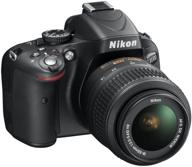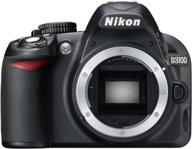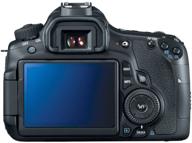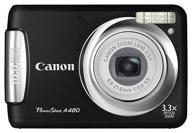
Review on 📷 Canon EOS Rebel T2i DSLR Camera (Body Only) (No Longer Sold by Manufacturer) by Anthony Lopez

Great camera at a great price
I have read other reviews here and some of the negative reviews seem to miss the point of this camera. I give it a five star rating. Does this mean the camera is perfect? No, but it's so good at what it does that you'll find it in this price range. Do you want better build quality, a more comfortable (but larger) case, extra knobs and knobs, and LCD screens? Then buy 60D or 7D - this is not your camera. This is an entry-level DSLR and I see it as such and not in comparison to more expensive semi-pro DSLRs. Yes, there are some compromises - that's why the price is so. On the other hand, this camera has the same sensor and image processor (yes, exactly the same) as the Canon 60D. So if you just want high quality photos and videos, you can't do better without this. I spend thousands of dollars. I'm a Rebel veteran – my first was a 35mm Rebel 2000 in 1999, the first entry-level SLR ever to have a switchable program mode. Canon's Rebel line always seems to have a few features that their direct entry-level competitors don't, and that's why I keep buying them. My last Rebel was the Rebel XT, which replaces the T2i for me. T2i sensor blows Rebel XT doors. My first shot (in program mode) auto-set to 3200 ISO - something the XT wasn't even capable of - and it looked just as good as the XT at 200 ISO! I haven't noticed any problems with focus or exposure, although like all Canon cameras, the white balance isn't great in incandescent light. It's been going on for so long that I have to believe Canon really intended it. Tungsten light is yellow and our eyes get used to it, so we don't see it that way when we're under it. But the Rebel T2i, like all Canon digital cameras of all time, displays photos under incandescent light with a distinct yellow cast - perhaps truthful, but not what our eyes see. You can make it more natural with a custom white balance. I repeat, some people say the video mode is a bit counterintuitive, but part of that seems to be that Canon can let you take photos while recording video, which is a pretty interesting feature. First put the camera in video mode, then use the shutter button to focus and then press the video capture button to start recording. Click again to stop. During recording, you can press the shutter button all the way down to take a picture normally and the video recording will continue. You can also focus manually (which eliminates the possibility of autofocus noise in video) and then not have to worry about the shutter button in video mode. This camera has an external microphone connection, which is new for entry-level DSLRs. Video quality is excellent, with very low video noise even in low light, and sharpness that's really more limited by your lens than anything else (the sensor has more than enough pixels to handle 1080p video). This is another matter - most of the criticism. What the negative reviews say about this camera is actually a criticism of the lens that this product (I'm just looking at the body) doesn't have! Slow autofocus, loud autofocus. These are lens issues, not camera issues. I use my trusty Sigma 18-50 HSM DC OS lens and have no problems. I recommend this lens over the Canon kit lens, which means I only recommend the T2i body over the kit. In any case, remember that this is an SLR camera - not all problems are the camera's fault and lenses can easily be swapped out. In conclusion, in terms of build quality and ergonomics. Canon's Rebel range has always been "plastic" and the T2i is no exception. However, their Digital Rebels have always been sturdier than they think, with a steel frame beneath the polycarbonate body. I've dropped my Rebel XT at least half a dozen times from waist-level or eye-level onto a variety of surfaces, including bare concrete, with no damage whatsoever - not even a scratch. The quality of T2i practically does not differ from XT. I'm a bit disappointed that the main wheel and shutter button are now plastic instead of metal, but it's actually more like how Rebel cameras used to be built (pre-digital age) and the main metal structure isn't really changed. since XT. I will say that this camera is more comfortable to hold than the XT, which didn't have any rubberized surfaces at all. There are some trade-offs with the ergonomics of this camera though - it's a compact SLR so it's relatively light and easy to walk around with, but a little more difficult to hold than a full-size DSLR with a small grip and button placement making it awkward can . Again, this isn't a camera for people who want a 'big' DSLR. One small thing to note is that the T3i is already on the market so you might want to consider it, but the T2i will remain on the market as a slightly cheaper alternative. . The main difference between the T3i and the T2i is the folding screen. I didn't need it so I chose T2i. (The 60D also has a folding screen, not just bigger.) So basically in this range you have the T2i, the most recent model with this new sensor, the T3i, which adds a folding screen (and a few little things). . like digital zoom) and the 60D, which has a larger body, better viewfinder, and faster burst speed. If you go under T2i you lose video modes and resolution. For me the T2i was the perfect place to go, but if you want that big DSLR feel you can always save up on the 60D. I personally don't think the T3i is a sufficient upgrade to justify its additional cost.
- Great overall performance
- Updates
New products
Comments (3)

Top products in 📷 Digital Cameras

Nikon D5100 Digital SLR Camera with 18-55mm VR Lens - High Resolution 16.2MP

172 Review

Nikon D3100 DSLR Camera Body (Kit Box) - No Lens Included, International Version with No Warranty

298 Review

Canon EOS 60D: 18MP CMOS Digital SLR Camera Body - Your Next Photography Companion

125 Review

Canon PowerShot A480 camera, black

108 Review








